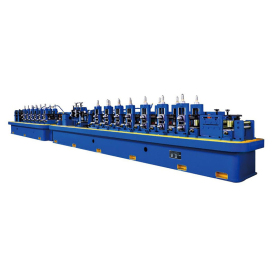[CNC Flying Saw Machine]Exploring the Advanced Benefits and Applications of CNC Flying Saw Machines in Modern Manufacturing Industries
****
In the rapidly evolving landscape of manufacturing, efficiency and precision have become paramount. Companies are constantly seeking solutions that not only improve production timelines but also enhance the quality of finished products. One innovation that has significantly changed the way cutting tasks are approached is the CNC flying saw machine. This advanced machinery offers a range of benefits and applications that make it a valuable asset to modern manufacturing industries.
Understanding CNC Flying Saw Machines
CNC flying saw machines combine the precision of computer numerical control (CNC) technology with the robust cutting capabilities of traditional saw machines. Unlike conventional saw machines that may require the workpiece to remain stationary during the cutting process, CNC flying saws operate dynamically. This means that the saw blade moves simultaneously with the material being cut, significantly increasing the speed and efficiency of the operation.
Key Components of CNC Flying Saw Machines
A typical CNC flying saw machine consists of several components, including:
1. **CNC Control System**: This software component allows for precise automation and programmability, enabling operators to create complex cutting patterns and transitions with easy input adjustments. 2. **Cutting Mechanism**: The saw blade attached to the machine can vary in type and size, depending on the material being processed and the required cut. The cutting mechanism is engineered for high-speed operations, ensuring clean and efficient cuts.
3. **Feeding System**: The feeding system transports materials into the cutting area, working in tandem with the flying saw to maintain consistent feeding speeds and lengths.
4. **Safety Features**: Advanced safety features are incorporated into the design of CNC flying saw machines to prevent accidents and ensure operator safety during operation.
Advantages of CNC Flying Saw Machines
1. **Increased Efficiency**: One of the most significant advantages of CNC flying saw machines is their ability to operate at high speeds. The integrated processing of cutting and feeding reduces the operational time, resulting in increased production rates.
2. **Enhanced Precision**: CNC technology allows for precise control over the cutting process, drastically reducing human error. This precision ensures that each cut is uniform and meets specific dimensions, which is crucial for industries such as aerospace, automotive, and construction.
3. **Versatility in Applications**: CNC flying saw machines are highly versatile and can be used across various materials, including metals, plastics, and composites. This adaptability makes them ideal for manufacturers dealing with diverse products and materials.
4. **Reduced Material Waste**: By executing cuts with precision and speed, CNC flying saw machines minimize scrap and waste. Efficient cutting patterns and precise cutting techniques decrease the amount of leftover material, contributing to cost savings and sustainability efforts.
5. **Lower Labor Costs**: With machines being able to perform tasks that formerly required multiple operators, businesses can reduce their labor costs significantly. The automation of the cutting process also allows companies to redirect their workforce towards more skilled tasks.
Applications Across Industries
The applications of CNC flying saw machines are widespread and can be found in several sectors:

Exploring the Advanced Benefits and Applications of CNC Flying Saw Machines in Modern Manufacturing Industries
– **Construction**: In the construction industry, precision cutting is critical for producing materials like rebar and structural beams. CNC flying saws ensure that these materials are cut to exact specifications.

Exploring the Advanced Benefits and Applications of CNC Flying Saw Machines in Modern Manufacturing Industries
– **Metal Fabrication**: Metal fabricators utilize CNC flying saw machines for cutting aluminum, steel, and other metals with high accuracy, making them a cornerstone of metalworking shops.
– **Automotive Manufacturing**: The automotive sector benefits from CNC flying saw technology for producing components with intricate shapes and exact dimensions, thus improving the overall quality of vehicles.
– **Aerospace Industry**: With demanding standards for safety and performance, aerospace manufacturers depend on the precision of CNC flying saw machines for cutting materials used in aircraft bodies and components.
Conclusion

Exploring the Advanced Benefits and Applications of CNC Flying Saw Machines in Modern Manufacturing Industries
As industries continue to seek innovative solutions for enhancing productivity and efficiency, CNC flying saw machines stand out as vital tools in the manufacturing arsenal. Offering superior speed, accuracy, and versatility, these machines are revolutionizing the cutting process across multiple sectors. Investing in CNC flying saw technology not only streamlines production but also contributes to long-term cost savings and sustainability, making it an essential consideration for manufacturers aiming to thrive in today’s competitive marketplace. As this technology continues to evolve, we can anticipate even more advancements that will shape the future of manufacturing.Reliable Spare Parts for Cold Cutting Saws